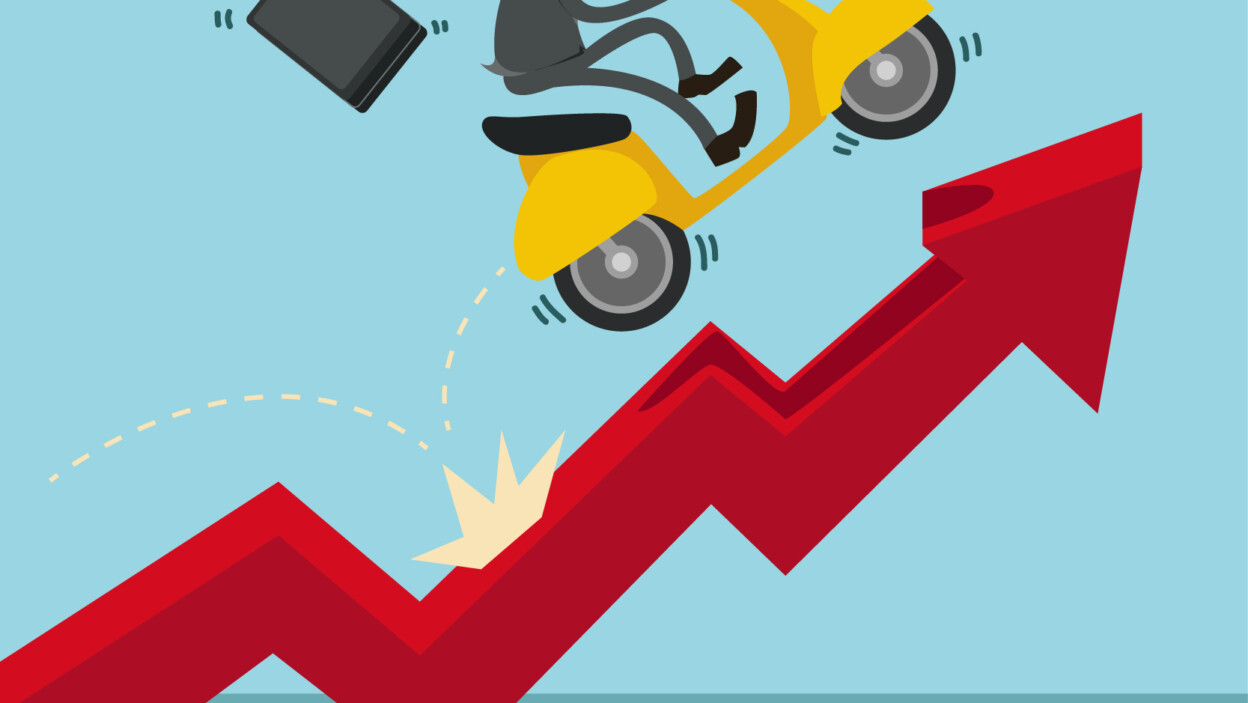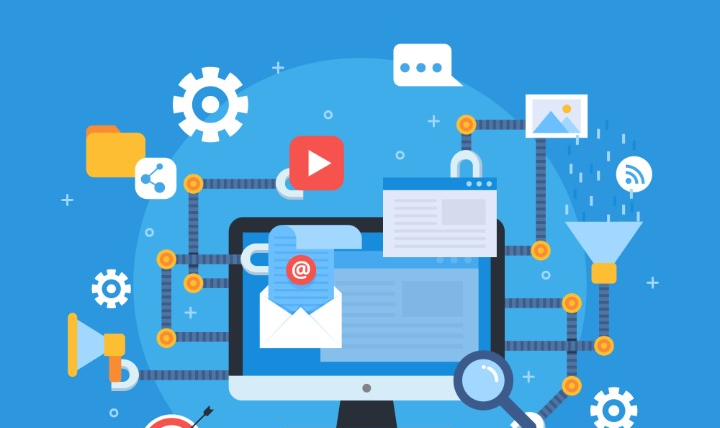Sales is a process through which a company sells its products or services to customers. It’s how businesses generate revenue and sustain themselves. At its core, sales involve understanding what customers need or want and then providing them with a solution or item that meets that need.
Sales can happen in various settings, such as a store, online, over the phone, or even door-to-door. A good sales process not only focuses on completing the immediate sale but also aims to build a lasting relationship with the customer, encouraging repeat business and fostering trust.
History of Sales
The process of selling is as old as human civilization itself. From ancient marketplaces where people bartered goods to medieval merchants traveling great distances selling exotic wares, sales have always been an integral part of society.
As time progressed, sales methods evolved: the Industrial Revolution brought mass production, while the 20th century introduced innovative advertising and marketing. Fast forward to today, and the digital age has revolutionized sales once again with online shopping, social media marketing, and sophisticated customer relationship tools.
Throughout history, the purpose of sales has remained the same: connecting people with products or services that they need or desire.
Different Types of Sales
Even though the sale is a process of facilitating transactions between buyers and sellers, sales can be categorized into different types based on who the sellers and buyers are in the transaction.
Business-to-consumer (B2C)
The B2C sales model is when businesses sell products or services directly to individual customers. This is one of the most traditional and prevalent aspects of our daily lives. For instance, when you walk into a grocery store and buy groceries, it is a B2C transaction. The grocery store, or business, is selling a product directly to you, the consumer. B2C sales can happen in retail settings, both in physical stores and online shops. The main aspect of the B2C model is its focus on individual consumers, catering to their needs, preferences, and buying habits.
Business-to-business (B2B)
The B2B sales model is when one business sells products or services to another business. Unlike the B2C model, where the target is individual consumers, B2B focuses on other businesses. For example, a company that produces office furniture might sell desks and chairs to enterprise customers. This sale isn’t for individuals but for the entire corporation. B2B transactions happen when there is a need for bulk purchases. The B2B sales process can be more complex and take longer, as it involves negotiations, contracts, and the supply chain.
Consumer-to-consumer (C2C)
The C2C sales model is where individuals sell their products or services to other individuals through a marketplace platform such as Facebook, eBay, or Etsy. For example, if you’re looking for a used car, you no longer have to visit a dealership; instead, you can buy it through the Facebook or eBay marketplace. In this case, the consumer-to-consumer (C2C) ace platform facilitates the transaction for a fee.
How to drive sales through the website
The “Sales Funnel” is a step-by-step sales process that the customer takes from the moment they learn about your product or service to the point of purchase. It starts with awareness about a product, then cultivating interest, followed by a decision phase, and finally leading to a sale.
A website is a powerful tool that you can use to automate the entire sales funnel. By guiding visitors from their initial landing on the site to making a purchase, you can streamline your sales process within the website. It starts with driving quality traffic to the website, creating awareness of the product or services, generating leads, and driving sales.
As we’ve already explored the automation of various sales funnel steps, in this article, let’s delve into diverse lead generation methods. We’ll examine specific sales-driven call-to-actions and the processes behind those calls. Furthermore, we’ll discuss additional strategies for leveraging your website to boost sales.
Sales-focused Call-To-Actions
- Shop or Buy Now
- Subscriptions
- Get Started
- Get a Quote
Promotions
- Offers and Discounts
- Free Shipping
- Contests and Giveaways
Programs
- Referral Programs
- Reward Programs
- Affiliate Programs
Sales-focused Call-To-Actions
Sales-focused Call-to-Actions (CTAs) are prompts designed specifically to drive a visitor or user toward making a purchase or showing interest in a product or service. These CTAs stand out on websites to grab attention and encourage an immediate response. Common examples include “Buy Now,” “Add to Cart,” or “Get a Quote.”
The main purpose of the sales-focused CTAs is to simplify the buying journey by providing a clear next step. Whether it’s starting a free trial, scheduling a consultation, or proceeding to checkout, In essence, sales-focused CTAs are clear signposts, helping visitors navigate their path to purchase without confusion.

Shop Now or Buy Now Call-To-Action
The “Shop Now” call-to-action (CTA) is one of the prominent actions that encourage visitors to begin or continue their shopping journey. This simple yet powerful button is designed to grab attention and lead a visitor directly to a product page or a curated shopping area.
When a user clicks on the “Shop Now” button, they’re typically taken to a space where they can view products, learn more about them, and add them to their cart. The underlying idea is to reduce the steps between a potential customer’s interest and their purchase, making the shopping experience seamless and straightforward. In essence, the “Shop Now” CTA serves as a clear gateway to the buying process.
When a user clicks on the “Shop Now” button, here’s the typical process that unfolds:
- View Catalog: The button usually directs the user to a product or service catalog or list page, showcasing various products or services on the website.
- Product Selection: Once the user is in the catalog, they can browse through products, read descriptions, view images, and select items they’re interested in.
- Add to Cart: After choosing a product, users can add it to their virtual shopping cart, a digital space where all selected items are stored for checkout.
- Checkout Process: When ready, users proceed to checkout. Here, they provide shipping information, choose a payment method, and finalize their purchase.
- Confirmation: After completing the purchase, users typically receive a confirmation message on the website and via email, detailing their order and expected delivery.
The “Shop Now” call to action simplifies the last stage of the sales funnel, ensuring that with just one or two clicks, users are well on their way to getting the products they desire.
Subscribe Now Call-To-Action
The “Subscribe Now” call-to-action (CTA) is one of the popular calls to action frequently used on software-as-a-service (SaaS) websites that invite users to commit to a software service. This button stands as a gateway between potential interest and concrete commitment, bridging users from mere exploration to active subscription.
When a user clicks on the “Subscribe Now” button, here’s the typical process that unfolds:
- Subscription Options: Users are presented with various subscription tiers or plans, each detailing features, benefits, and pricing. This can range from basic to advanced packages, monthly to yearly billing cycles, or individual to enterprise solutions.
- Account Creation: Users are prompted to create an account or sign in. This account helps them manage their subscription, track usage, and access customer support.
- Payment Details: Users provide their payment information, such as credit card details or other payment gateways. The billing process is typically automated, and recurring based on the chosen subscription period.
- Confirmation: Once the subscription is processed, users receive a confirmation, often via email. This will outline their subscription details, payment schedule, and any onboarding resources to help them get started.
The “Subscribe Now” call to action simplifies the sales process for a SaaS business, ensuring that users can purchase, sign up, and start using the service in just a few clicks.
Get Started Call-To-Action
The “Get Started” call-to-action (CTA) is a motivational prompt often used in professional services websites, encouraging visitors towards the path to conversion.
When clicked, it often leads to a registration process, a pricing page, or even a product tour. This call to action is ideal for businesses offering subscription services or complex solutions that involve multiple steps. For example, the Dropbox “Get Started” button takes the user to the pricing page, where the user can purchase a subscription for the Dropbox services.
Here’s the typical journey behind the “Get Started” button:
- Introduction or Pricing: When clicked, users are often taken to a product page or the pricing page. This provides an overview of the product or service, pricing options, and highlights product features and benefits.
- Registration or Signup: To personalize the experience, users might be prompted to create an account or provide some basic information. This step helps businesses gather essential data on their users.
- Customization: Depending on the platform, users may be given options to tailor their experience, such as choosing preferences, setting up a profile, or selecting specific features.
- User Engagement: Users are then encouraged to take action, be it trying out a software feature, making a small purchase, or setting up their first project.
The main difference between “Subscribe Now” and “Get Started” is that the Subscribe Now button moves the users immediately to the purchase option; on the other hand, the Get Started button walks the users through a series of steps before making the purchase.
Get A Quote Call-To-Action
The “Get a Quote” call-to-action (CTA) is a prompt used by businesses that offer services or products with variable pricing, depending on specific customer needs. Websites that typically employ this CTA include those in industries like insurance, real estate, manufacturing, or services like web design and consultancy. The reason? Their offerings are often tailored to individual requirements, making a one-size-fits-all price challenging.
When a visitor clicks on “Get a Quote”, they’re usually directed to a form. This form collects pertinent details, like the type of service needed, dimensions, preferences, or other relevant information. After submission, the business assesses the provided data and responds with a price tailored to the user’s specifications. Essentially, this CTA provides both a personalized service for the customer and a valuable lead-generation tool for the business. Below are the typical steps behind the “Get a Quote” button:
- Input Form: The user is usually taken to a dedicated form designed to collect specific details relevant to the quotation.
- Form Submission: Once all necessary details are provided, the user submits the form.
- Confirmation: An automated response confirming the receipt of the quote request with a timeline for when they can expect the quote to be sent to the user.
- Create Quote: Based on the provided details, the business creates a custom quote. This step is most often automated, providing a quick response.
- Response to User: The user receives a detailed quotation, usually via email, which outlines the cost and any other relevant details or terms.
Please note that the specific steps can vary depending on the nature of the business and the complexity of the products or services being quoted.
Promotional Offers
The marketing efforts can lead users to the website, but the promotional offers generate curiosity to explore your products and services further.
Creating a compelling offer encourages users to delve deeper into the site, explore products, and ultimately make a purchase. When the customer is faced with multiple choices, a good promotional offer can lead them to choose your brand over others.
In this section, let’s explore some of the most popular promotional offers.
Discount Offers
Discounts are time-tested strategies employed by businesses to attract customers and boost sales. Essentially, this method involves reducing the original price of a product or service, either to clear out inventory, entice new customers, or re-engage inactive customers. The appeal is straightforward: everyone loves to feel like they’re getting a bargain!
There are several types of discounts
- Percentage-based discounts reduce a set portion of the original price, like 20% off.
- Fixed-amount discounts offer a specified amount off, such as $10 off your purchase.
- Quantity discounts are given when customers buy in bulk, encouraging them to purchase more. Offers such as buy one, get one free fall into this category.
- Seasonal sales, which align with specific times of the year like Black Friday or end-of-season sales.
When designing discount offers, it’s essential to ensure they’re enticing enough to draw customers but not so steep that they compromise profitability. By understanding the total cost of your product or services and your desired profit margins, you can develop the right type of offer suitable for your business.
There are many benefits to offering discount offers. First, they can quickly draw traffic to your store, driving up sales volumes. This is an effective way to drive sales, especially if you’re a new business. Discounts can also help clear out old inventory, making room for new stock. From a marketing perspective, limited-time sales can create a sense of urgency, nudging customers to buy.
Gymshark, a UK-based fitness apparel brand founded in 2012, has experienced explosive growth, primarily driven by its “Blackout” sale, which they typically host around the time of Black Friday. During this event, Gymshark offers up to 50% off on select items, driving immense traffic to their website.
strong online presence and influencer partnerships. One of their most significant promotional events is the “Blackout” sale, which they typically host around the time of Black Friday. The results have been staggering, with the company often seeing record-breaking sales and traffic numbers during the blackout sales events.
Free Shipping
The “Free Shipping” offer has become one of the most common customer expectations in the world of online shopping, considering it almost a right rather than a perk. At its core, this promotional method involves a business absorbing the shipping costs, ensuring that customers pay only for the product’s price without any additional delivery charges.
There are various ways to implement free shipping. Here are a few options:
- Unconditional free shipping, where every order, regardless of its value or destination, ships for free.
- Conditional free shipping is where customers qualify based on certain conditions such as purchasing above a specific amount or buying selected items. Amazon offers a minimum purchase amount to avail free shipping.
- Limited-time free shipping, where the free shipping is offered as a limited-time promotion, especially for their loyalty program members. We can this promotion during Black Friday sales events, where many businesses offer free shipping reducing barriers to purchase.
When designing a free shipping offer, you should analyze your product cost, margins, and shipping cost. It might be more viable to raise product prices slightly to cover the shipping cost or set a minimum purchase threshold that ensures profitability even when shipping is free.
Zappos, founded in 1999, revolutionized online shoe shopping with its promise of free shipping on all orders and, crucially, free returns. Before Zappos, one of the primary barriers for customers when buying shoes online was the uncertainty of fit and the potential hassle and cost of returning an ill-fitting item. By offering free shipping both ways, Zappos mitigated this risk for customers. By the time Amazon acquired Zappos in 2009 for nearly $1.2 billion, Zappos had become a household name, in large part due to its pioneering free shipping and return policy. Even today, every Zappos order comes with free shipping and returns.
Contests & Giveaways
Contests and giveaways are engaging promotional offers that tap into the innate human love for winning and getting something for free.
Essentially, these strategies involve offering a prize or reward to participants, usually contingent on certain actions or conditions. The enticing element is undeniable: who wouldn’t want to win something just by participating?
Some of the popular contests and giveaways include:
- Sweepstakes are the most straightforward, where participants enter and winners are chosen at random. Photo or video contests encourage participants to create and submit content, often around a particular theme or using a specific product.
- Referral contests reward participants for introducing new customers or subscribers.
When crafting a contest or giveaway, it’s vital to clearly define the entry and exit conditions, choose a relevant and enticing prize, and ensure the rules adhere to any applicable laws or platform guidelines. Promoting the contest effectively through various channels is also crucial for its success.
The benefits of contests and giveaways are multifaceted. First, they can rapidly increase brand visibility and awareness, especially if they go viral. They can also be instrumental in building an email or subscriber list, as many contests require participants to sign up or follow the brand on social media.
The contests and giveaways work best for businesses that rely heavily on user-generated content, such as fashion or travel. These contests can generate a vast amount of user-generated content, which can be used for marketing purposes. Businesses need to ensure that the value generated from the contests can justify the cost. The key is to strike a balance between being generous enough to entice participation and pragmatic enough to maintain profitability.
Doritos’s “Crash the Super Bowl” campaign is a good example. For a decade, from 2006 to 2016, Doritos ran the “Crash the Super Bowl” contest, which invited fans to create their own Doritos commercials. The prize? The winning ad would be aired during the Super Bowl, one of the most-watched TV events in the U.S., and the creator would receive a significant cash prize. The results were astounding. Doritos not only received tens of thousands of video submissions but also garnered massive attention and engagement on social media. Fans voted for their favorite ads, leading to organic discussions and debates online. The user-generated commercials often ended up being fan favorites and even outperformed many professionally produced Super Bowl ads in viewer polls.
Promotional Programs
Similar to promotional offers, many businesses use promotional programs to drive sales. Programs, ranging from loyalty schemes to referral systems, offer a structured approach to incentivizing and retaining customers. They serve as a bridge between businesses and their clientele, fostering repeated interactions and enhancing the overall customer experience.
Promotional programs are often used to incentivize and retain customers. Some of the popular programs include referrals, rewards or loyalty, and affiliates.
Referral Program
A referral program is a deliberate, structured method companies employ to encourage customers or users to recommend their products or services to others. Essentially, it’s a way of turning satisfied customers into brand ambassadors. Referral programs can take various forms, including cash rewards, discounts, credits, or even exclusive perks and experiences.
The referral program capitalizes on the trustworthiness of word-of-mouth, which is more powerful than traditional advertising. Acquiring customers through referrals also tends to cost less than through other channels. Moreover, referred customers often have a higher lifetime value, as they have a higher degree of trust based on their friend’s endorsement.
The key to designing a compelling referral program is ensuring both the referrer and the referee get value. It’s also crucial to make the referral process straightforward.
Dropbox, the cloud storage platform, is a prime example of leveraging referrals brilliantly. When Dropbox started, they offered additional free storage space both to users who referred new customers and those who joined on a referral. This incentive was perfectly aligned with their product, and because of it, Dropbox saw a 60% increase in sign-ups, a growth that played a significant role in the company’s eventual dominance in the cloud storage space.
Loyalty or Reward Program
Loyalty or reward programs are structured marketing strategies to motivate customers to continue using their products or services. These programs reward repeat customers by offering them discounts, merchandise, or other incentives. Their primary aim is to retain existing customers, which is often more cost-effective than acquiring new ones.
There are various types of loyalty programs. Some operate on a points-based system where purchases translate to points that can be redeemed for goods or rewards. Others might offer a straightforward discount on future purchases or exclusive access to sales and events. Tiered programs provide increased rewards the more a customer engages with a brand.
The benefits of loyalty programs are substantial. Not only do they incentivize repeat business, but they also lead to larger transactions. When customers feel valued, they’re more likely to choose preferred brands over competitors. Moreover, they provide valuable data on purchasing habits and preferences.
When designing a loyalty program, it’s crucial to ensure the offer is genuine, resonates well with the target customer, and is easily accessible.
Kohl’s Cash is one of the effective loyalty programs championed by the Kohl’s department store chain. Customers enrolled in the “Kohl’s Cash” program earn Kohl’s cash on purchases, which can be used on future transactions within a specific redemption period. This encourages repeat visits and creates an urgency to utilize the rewards within the designated time frame. This layered approach keeps customers engaged, ensuring they return frequently. In an age where brick-and-mortar stores face stiff competition from online retailers, Kohl’s has managed to keep its customers loyal and engaged through the strategic use of its loyalty programs.
Affiliate Program
Affiliate programs are arrangements in which a company pays a commission to affiliates (typically bloggers, content creators, or online marketers) for generating sales or traffic through the affiliate’s marketing efforts. Essentially, it’s a performance-based marketing strategy: businesses reward one or more affiliates for each visitor or customer brought by the affiliate’s marketing activities.
There are several types of affiliate programs, with the most common being Pay-Per-Sale (PPS), where the merchant pays the affiliate a percentage of the sale price when a purchase is completed. Pay-per-click (PPC) programs compensate affiliates based on the number of visitors directed to the website, regardless of whether a sale is made. Another type, Pay-Per-Lead (PPL), pays affiliates based on the number of qualified leads (like sign-ups) they bring in.
The affiliate program allows businesses to tap into new customer bases without upfront advertising costs, as payment is contingent on actual sales or leads. Affiliates, on their end, get a chance to earn commissions without the need to handle the product, shipping, or customer service.
Affiliate programs are particularly beneficial for online retail, digital product businesses, and service providers. When setting up an affiliate program, clarity is crucial. Clear terms of agreement, easy tracking systems, prompt payment methods, and support for affiliates can lead to a successful affiliate partnership.
Amazon’s Affiliate Program, also known as Amazon Associates, stands as a prominent example of a successful program. By allowing website owners, bloggers, and influencers to promote millions of products on its platform, Amazon expanded its reach exponentially. Affiliates create content around products and earn a commission for every sale made through their referral link. The simplicity of its structure, combined with the vast array of products to promote, has made Amazon’s Affiliate Program one of the most popular and effective in the world, helping Amazon maintain its e-commerce dominance.
Summary
Throughout this article, we’ve explored the role websites play in driving sales and the key features that make them effective sales tools. We delved into the significance of e-commerce integration and how distinct sales models like B2C, B2B, and C2C operate. We touched upon the strategic power of sales-focused call-to-Actions and the processes behind buttons like ‘Shop Now’, ‘Subscribe Now’, ‘Get Started’, and ‘Get a Quote’. We also looked at various promotional offers and programs that you can use to drive sales through your website.
Effective web design combined with strategic sales processes can significantly drive sales. Minutly’s sales-driven website service is tailored to help businesses like yours thrive in the competitive digital marketplace. Check out Minutly or contact us with any questions. We’re here to help!








How to launch your web design service – A comprehensive guide to success
Top 10 Essential Sales Service Requests Every Business Should Offer
How to launch your web application development service
What is a Service Catalog?
What is a Service Catalog?
Top 10 Essential Sales Service Requests Every Business Should Offer
Sharing your Minutly Catalog
Setting up your catalog